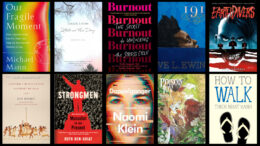A few months ago, I decided to take a break from reading environmental books.
I didn’t make the decision lightly — I’m an environmental journalist, after all. But I’ve spent the past seven years reading and reviewing hundreds of weighty tomes on climate change, endangered species and environmental justice. With a rare (and now-completed) sabbatical on the horizon, I felt the need to recharge and immerse myself in different forms of writing.
So I chose to put the eco-books aside for a while and devote my free time to history, poetry, philosophy, literature and pure entertainment.
Oh, what a fool I was.
Because you can’t escape tough topics like global warming, extinction and injustice — even in the pages of political analysis, science fiction, Buddhist teachings, poetry and comic books.
The natural world is all around us, and the best writers bring it to life in their work, no matter the broader topic. Science history? That’s an environmental subject. Religion? That’s an environmental issue. Batman? He’s named after an animal, naturally. They’re all reflections of the cultures we live in, the pain we feel, our relationships and our transitions.
I found myself reflecting on the environmental messages contained in these diverse volumes. In my first book-review column of 2024, below, I dig into some of them, mostly published in the past couple of years. Few were marketed as “environmental” books, but they contain wisdom environmentalists may enjoy.
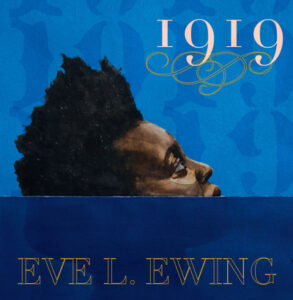 1919 by Eve L. Ewing — This poetry collection is easily one of the most powerful and vital books I’ve read in the past year. It’s based on a painfully real series of events that took place in Chicago more than a century ago, when a deadly heat wave and a history of inequality combined to create an even deadlier racial conflict. This all happened long before the era of runaway climate change, but Ewing’s poetic accounts — drawn from little-seen documents contemporary to what became known as the Chicago Race Riot — feel painfully relevant. Could raging heat and injustice cause a violent crisis like this in the future? You’d better believe it.
1919 by Eve L. Ewing — This poetry collection is easily one of the most powerful and vital books I’ve read in the past year. It’s based on a painfully real series of events that took place in Chicago more than a century ago, when a deadly heat wave and a history of inequality combined to create an even deadlier racial conflict. This all happened long before the era of runaway climate change, but Ewing’s poetic accounts — drawn from little-seen documents contemporary to what became known as the Chicago Race Riot — feel painfully relevant. Could raging heat and injustice cause a violent crisis like this in the future? You’d better believe it.
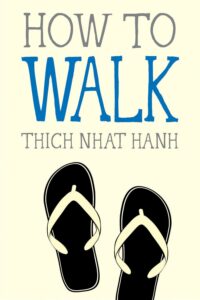 How to Walk by Thich Nhat Hanh — Parallax Press has condensed the late Buddhist teacher’s writings and speeches into 11 pocket-sized books called the “Mindfulness Essentials” series. I read them the entire series during my sabbatical, and each volume has at least something to do with the environment — this one more than most. It touches on the importance of placing our feet on the ground and — as we take each step — recognizing where we are in the greater scheme of our neighborhoods, our communities, the planet and the universe. These are lessons I’ve already come back to it a few times. (Also relevant and recommended: How to Fight, How to Connect, and How to Relax.)
How to Walk by Thich Nhat Hanh — Parallax Press has condensed the late Buddhist teacher’s writings and speeches into 11 pocket-sized books called the “Mindfulness Essentials” series. I read them the entire series during my sabbatical, and each volume has at least something to do with the environment — this one more than most. It touches on the importance of placing our feet on the ground and — as we take each step — recognizing where we are in the greater scheme of our neighborhoods, our communities, the planet and the universe. These are lessons I’ve already come back to it a few times. (Also relevant and recommended: How to Fight, How to Connect, and How to Relax.)
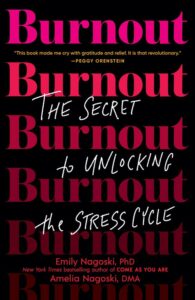 Burnout: The Secret to Unlocking the Stress Cycle by Emily Nagoski & Amelia Nagoski — A book every environmentalist should read — or at least keep on the shelf for when they need it. And trust me, you’re probably going to need it. This doesn’t specifically cover environmental topics, and it’s written chiefly for women and the pressures they face, but it contains tips and tools for recovering from burnout that can help us rebuild for the long fight ahead. (Side note: My local library had a 17-week reservation backlog when I first tried to read this, so maybe put in your request early?)
Burnout: The Secret to Unlocking the Stress Cycle by Emily Nagoski & Amelia Nagoski — A book every environmentalist should read — or at least keep on the shelf for when they need it. And trust me, you’re probably going to need it. This doesn’t specifically cover environmental topics, and it’s written chiefly for women and the pressures they face, but it contains tips and tools for recovering from burnout that can help us rebuild for the long fight ahead. (Side note: My local library had a 17-week reservation backlog when I first tried to read this, so maybe put in your request early?)
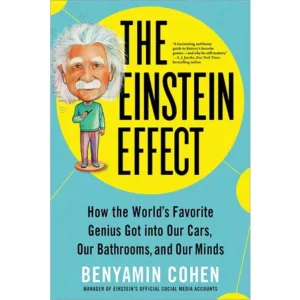 The Einstein Effect: How the World’s Favorite Genius Got into Our Cars, Our Bathrooms, and Our Minds by Benyamin Cohen — A planet-hopping travelog through the late scientist’s achievements and impact on the world, including several surprising environmental tie-ins. You’ll gain a new appreciation for the white-haired icon and a better understanding of how one person can have a powerful ripple effect that lasts for decades. Plus, you get to find out what happened to Einstein’s brain after he died. (Spoiler alert: It ain’t pretty).
The Einstein Effect: How the World’s Favorite Genius Got into Our Cars, Our Bathrooms, and Our Minds by Benyamin Cohen — A planet-hopping travelog through the late scientist’s achievements and impact on the world, including several surprising environmental tie-ins. You’ll gain a new appreciation for the white-haired icon and a better understanding of how one person can have a powerful ripple effect that lasts for decades. Plus, you get to find out what happened to Einstein’s brain after he died. (Spoiler alert: It ain’t pretty).
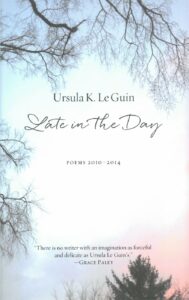 Late in the Day: Poems 2010–2014 by Ursula K. Le Guin — Only one poem in this book by the late science-fiction author contains any real environmental themes, but coincidentally, it may also be the best poem I’ve ever read. And no, I’m not going to tell you which one. Go find out for yourself.
Late in the Day: Poems 2010–2014 by Ursula K. Le Guin — Only one poem in this book by the late science-fiction author contains any real environmental themes, but coincidentally, it may also be the best poem I’ve ever read. And no, I’m not going to tell you which one. Go find out for yourself.
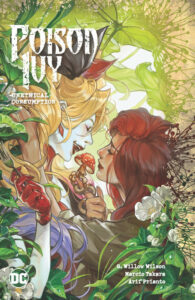 Poison Ivy Vol. 1: The Virtuous Cycle and Poison Ivy Vol. 2: Unethical Consumption by G. Willow Wilson, Marcio Takara & Atagun Ilhan — Stories featuring this green-clad Batman villain, who controls plants and seeks to wipe humans off the face of the planet, usually leave me cold. In the wrong creative hands, Poison Ivy makes for boring, didactic storytelling. But in this new iteration, Ivy’s in the right hands. This is a marvelously illustrated series, written by the creator of Muslim superhero Ms. Marvel, that deftly tackles all manner of environmental issues in ways that entertain, educate and challenge the reader. Along the way Wilson shows us how a character considered by some as an “ecoterrorist” may have the best intentions in the world (even if she is, in this case, an occasional murderer).
Poison Ivy Vol. 1: The Virtuous Cycle and Poison Ivy Vol. 2: Unethical Consumption by G. Willow Wilson, Marcio Takara & Atagun Ilhan — Stories featuring this green-clad Batman villain, who controls plants and seeks to wipe humans off the face of the planet, usually leave me cold. In the wrong creative hands, Poison Ivy makes for boring, didactic storytelling. But in this new iteration, Ivy’s in the right hands. This is a marvelously illustrated series, written by the creator of Muslim superhero Ms. Marvel, that deftly tackles all manner of environmental issues in ways that entertain, educate and challenge the reader. Along the way Wilson shows us how a character considered by some as an “ecoterrorist” may have the best intentions in the world (even if she is, in this case, an occasional murderer).
 Conflict Resolution for Holy Beings: Poems by Joy Harjo — Pure beauty (with more than a little emotion thrown in for good measure). This collection by the former U.S. poet laureate touches many themes, including environmental ones, although I found the poems about music and loss to be the most resonant.
Conflict Resolution for Holy Beings: Poems by Joy Harjo — Pure beauty (with more than a little emotion thrown in for good measure). This collection by the former U.S. poet laureate touches many themes, including environmental ones, although I found the poems about music and loss to be the most resonant.
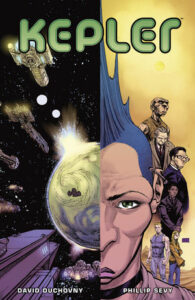 Kepler by David Duchovny & Phillip Sevy — This graphic novel flips the script from Duchovny’s X-Files days: What if humans landed on a less advanced alien planet and promptly taught the residents to make the same mistakes we’ve made here? The result: political divides, corruption, injustice, climate change, violence and all the other things that make humanity not so great. The resulting book has flaws, but it wears its satire proudly on its sleeve — and at least it has something to say.
Kepler by David Duchovny & Phillip Sevy — This graphic novel flips the script from Duchovny’s X-Files days: What if humans landed on a less advanced alien planet and promptly taught the residents to make the same mistakes we’ve made here? The result: political divides, corruption, injustice, climate change, violence and all the other things that make humanity not so great. The resulting book has flaws, but it wears its satire proudly on its sleeve — and at least it has something to say.
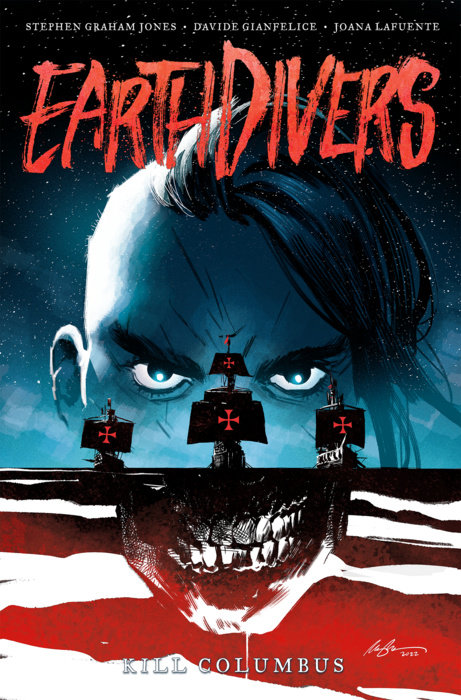 Earthdivers Vol. 1: Kill Columbus by Stephen Graham Jones & Davide Gianfelice — A graphic novel that packs a punch. In a future ruined by climate change, a lone Native American man travels back in time to rewrite history by… well, you can probably guess from the title. (Spoiler: It doesn’t go well.) Like all time-travel stories, the twists and turns and paradoxes get a little confusing if you’re not paying close attention, but it pays off (at least for now; the story is far from concluded in this first book). I came to this expecting some strong Indigenous storytelling about racial and cultural justice, but found the environmental themes provided extra relevance and raised the stakes even higher. It left me wondering: How long do we have to right our wrongs?
Earthdivers Vol. 1: Kill Columbus by Stephen Graham Jones & Davide Gianfelice — A graphic novel that packs a punch. In a future ruined by climate change, a lone Native American man travels back in time to rewrite history by… well, you can probably guess from the title. (Spoiler: It doesn’t go well.) Like all time-travel stories, the twists and turns and paradoxes get a little confusing if you’re not paying close attention, but it pays off (at least for now; the story is far from concluded in this first book). I came to this expecting some strong Indigenous storytelling about racial and cultural justice, but found the environmental themes provided extra relevance and raised the stakes even higher. It left me wondering: How long do we have to right our wrongs?
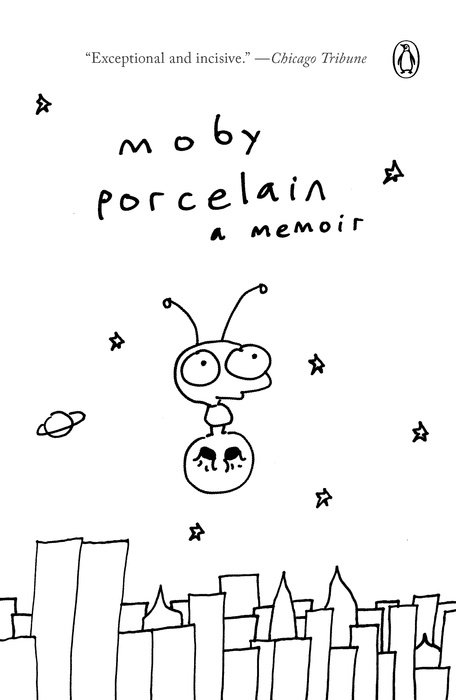 Porcelain by Moby — A memoir by the electronic music star, who touches upon veganism and animal rights throughout the book. But it’s also about finding beauty, purpose and community in a harsh, harsh world. It’s told through the lens of New York City in decades past, and that had me wondering about our collective future.
Porcelain by Moby — A memoir by the electronic music star, who touches upon veganism and animal rights throughout the book. But it’s also about finding beauty, purpose and community in a harsh, harsh world. It’s told through the lens of New York City in decades past, and that had me wondering about our collective future.
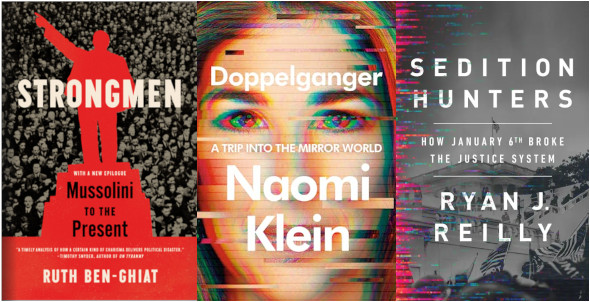 Strongmen by Ruth Ben-Ghiat; Sedition Hunters by Ryan J. Reilly; and Doppelganger by Naomi Klein — These books help clarify the threats people and the planet face from authoritarianism, disinformation and conspiracies — and the followers complicit in those crimes.
Strongmen by Ruth Ben-Ghiat; Sedition Hunters by Ryan J. Reilly; and Doppelganger by Naomi Klein — These books help clarify the threats people and the planet face from authoritarianism, disinformation and conspiracies — and the followers complicit in those crimes.
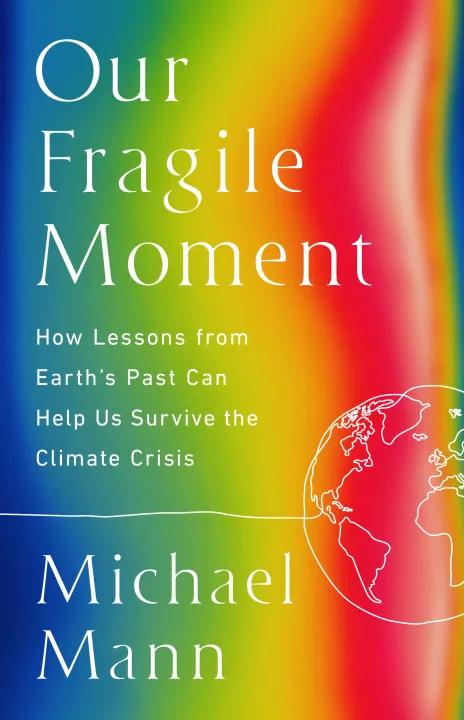 Our Fragile Moment: How Lessons from Earth’s Past Can Help Us Survive the Climate Crisis by Michael E. Mann — OK, I had to squeeze one explicitly environmental book into this column, and it’s a good one. Mann, the climate scientist who originated the famed “hockey stick” graph, has a right to be completely pessimistic about the future, but the fact that he leans into optimism gives me strength. I’ve come back to this one a few times as I look for inspiration to reach people with powerful messages about the struggles we’ll face over the coming years.
Our Fragile Moment: How Lessons from Earth’s Past Can Help Us Survive the Climate Crisis by Michael E. Mann — OK, I had to squeeze one explicitly environmental book into this column, and it’s a good one. Mann, the climate scientist who originated the famed “hockey stick” graph, has a right to be completely pessimistic about the future, but the fact that he leans into optimism gives me strength. I’ve come back to this one a few times as I look for inspiration to reach people with powerful messages about the struggles we’ll face over the coming years.
We’ll be back next month with several brand-new environmental books — and this time they’ll fully embrace the subject matter.
Get more from The Revelator. Subscribe to our newsletter, or follow us on Facebook and LinkedIn.
![]()
Previously in The Revelator:
The Perils of Capitalism and Disinformation: 4 Critical New Books

